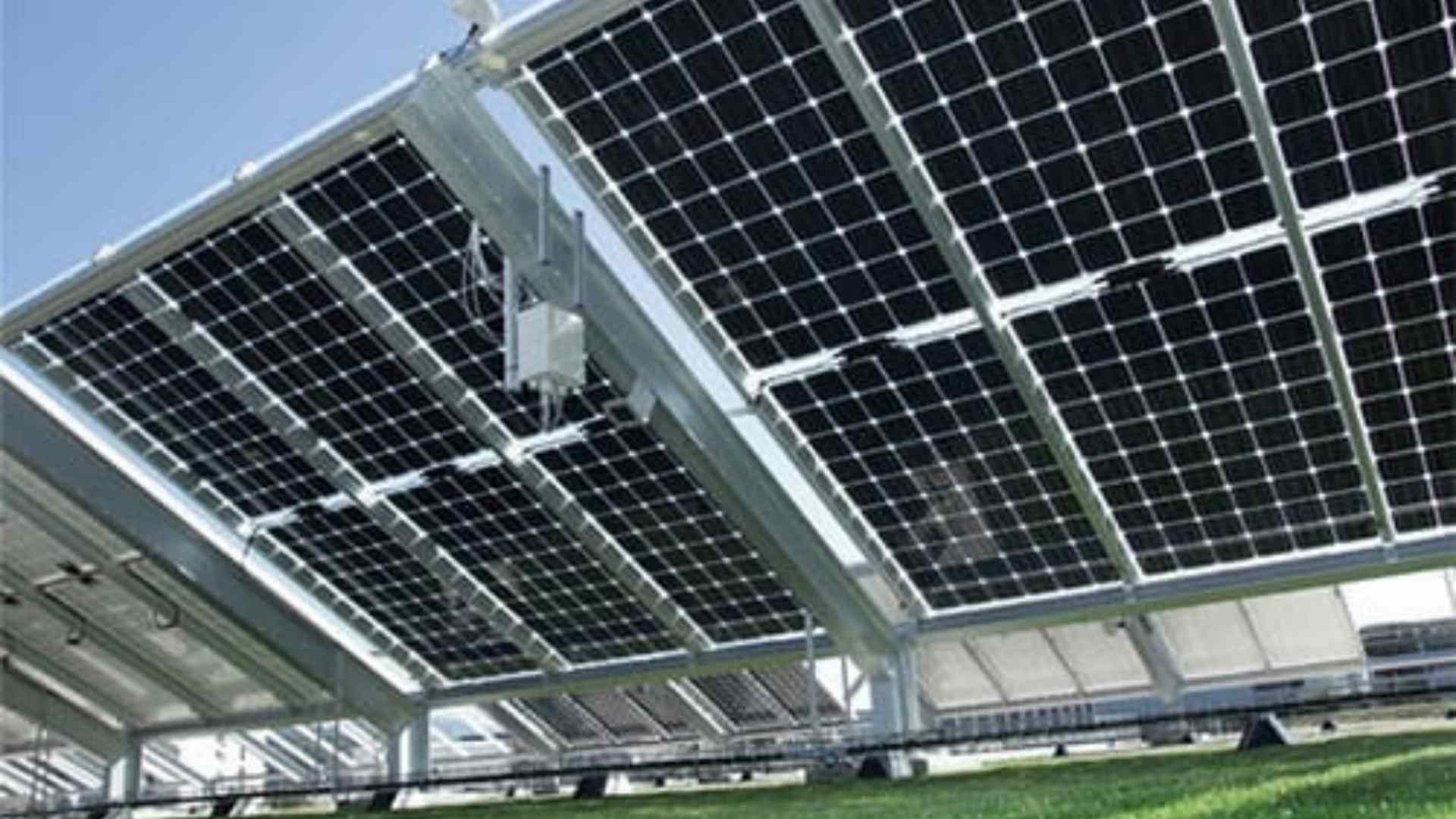Bei welcher Temperatur funktionieren Solarmodule nicht mehr?
Jul 31, 2025
Eine der häufigsten Annahmen über Solarmodule ist, dass sie bei wärmerem Wetter eine bessere Leistung erbringen. Schließlich sollte mehr Sonne auch mehr Energie bedeuten – oder? Die Realität sieht jedoch etwas differenzierter aus. Solarmodule benötigen zwar Sonnenlicht zur Stromerzeugung, hohe Temperaturen können jedoch ihre Effizienz verringern. Doch ab wann funktionieren sie überhaupt nicht mehr?Sehen wir uns genauer an, wie sich die Temperatur auf die Leistung von Solarmodulen auswirkt, welche Rolle verschiedene Zelltechnologien wie Mono-Halbzellen-Solarmodule und P-Typ-Halbzellen-Solarzellen spielen und was von hocheffizienten Systemen wie Solarmodulen der N-Serie bei extremer Hitze zu erwarten ist.Wie die Temperatur die Leistung von Solarmodulen beeinflusstSolarmodule wandeln durch den Photovoltaikeffekt Sonnenlicht – nicht Wärme – in Strom um. Wie die meisten elektronischen Geräte reagieren sie jedoch empfindlich auf Temperaturschwankungen. Mit steigender Temperatur sinkt die Ausgangsspannung einer Solarzelle, selbst bei konstanter Sonneneinstrahlung. Dies führt zu einem Rückgang der Gesamtleistung.Tabelle 1: Beispiel für Leistungsverlust durch Wärme basierend auf der TemperaturPaneltemperatur (°C)Grad über 25°CLeistungsverlust bei -0,38 %/°C2500%35103,8 %4527,6 %553011,4 %654015.25Dies bedeutet, dass in Umgebungen, in denen die Oberflächentemperatur der Module 50 °C erreicht (was bei direkter Sommersonne üblich ist), die Leistung um 10 % oder mehr reduziert werden kann – obwohl die Sonne intensiv scheint. Schalten sich Solarmodule aufgrund von Hitze jemals ab?Solarmodule haben keine bestimmte Temperatur, bei der sie sich vollständig abschalten. Stattdessen nimmt ihre Leistung mit steigenden Temperaturen allmählich ab. Die meisten Module sind für einen sicheren Betrieb bis etwa 85 °C (185 °F) ausgelegt. Ab diesem Punkt wird die Leistungsabgabe deutlich reduziert, aber nicht auf Null reduziert.Es ist jedoch wichtig, zwischen Zelltemperatur und Umgebungstemperatur zu unterscheiden. An einem 35 °C (95 °F) warmen Tag kann die tatsächliche Temperatur der Paneloberfläche leicht 60 °C oder mehr überschreiten, insbesondere bei schlechter Belüftung.Panels erreichen selten Temperaturen, die für einen Totalausfall in normalen Betriebsumgebungen sorgen. Wenn sie dennoch abschalten, liegt das meist an Schutzschaltungen im Wechselrichter oder im Batteriesystem, nicht am Panel selbst. Thermische Abschaltungen sind häufiger Wie verschiedene Paneltypen auf Hitze reagierenHalbierte Solarzellenmodule vom Typ PP-Typ Halbschnitt-Solarzelles werden aufgrund ihres guten Preis-Leistungs-Verhältnisses häufig in gewerblichen und privaten Installationen eingesetzt. Sie verwenden p-Typ-Silizium, das anfälliger für wärmebedingte Effizienzverluste ist als einige neuere Alternativen.Das Halbzellen-Design trägt jedoch dazu bei, einige dieser Probleme zu mildern. Durch die Halbierung der Zellen wird der Innenwiderstand reduziert, was die Temperaturbeständigkeit insgesamt verbessert. Zwar zersetzen sich die Zellen bei großer Hitze, doch ihre Struktur sorgt für eine stabilere Leistung als herkömmliche Vollzellen-Designs.Mono-Halbschnitt-SolarmoduleMono-Halbschnitt-Solarmodule verwenden monokristallines Silizium und ein Halbschnitt-Layout zur Leistungssteigerung. Sie haben tendenziell etwas bessere Temperaturkoeffizienten als polykristalline Modelle und sind im Allgemeinen effizienter.Da sie hocheffiziente Zellen mit reduzierten elektrischen Verlusten durch die Halbschalen-Konfiguration kombinieren, eignen sie sich besser für heiße Klimazonen. Viele dieser Module halten selbst bei Oberflächentemperaturen über 50 °C höhere Spannungs- und Stromstärken aufrecht. Sie werden außerdem häufig mit Antireflexbeschichtungen und hochbeständigem Glas kombiniert, um die Wärmeabsorption zu regulieren.Solarmodule der N-SerieSolarmodule der N-Serie repräsentieren die derzeit fortschrittlichste Photovoltaik-Technologie. Diese Module verwenden n-Typ-Silizium, das im Vergleich zu p-Typ-Zellen von Natur aus hitzebeständiger ist. Ihr Temperaturkoeffizient kann bis zu -0,30 %/°C betragen und bietet so eine höhere Leistungserhaltung bei hohen Temperaturen.In Regionen mit konstant hohen Umgebungstemperaturen bieten Module der N-Serie einen klaren Vorteil. Sie weisen zudem eine geringere lichtinduzierte Degradation (LID) auf, die bei älteren Zelltypen zu Problemen mit der Wärmeleistung führt. Für Großprojekte oder hocheffiziente Dachanlagen ist die Technologie der N-Serie oft die erste Wahl. Reale TemperaturszenarienWüstenumgebungenIn Wüstenklimazonen wie Arizona oder dem Nahen Osten übersteigen die Lufttemperaturen regelmäßig 40 °C. Auf einem Dach oder einer Freiflächenanlage können die Paneele über 75 °C heiß werden. Trotz intensiver Sonneneinstrahlung kann die Energieausbeute geringer ausfallen als erwartet, wenn nicht für ausreichende Kühlung oder ausreichend Abstand gesorgt wird.Installateure empfehlen oft erhöhte Montagestrukturen, um die Luftzirkulation hinter den Modulen zu ermöglichen, was zur Regulierung der Oberflächentemperaturen beiträgt. Hochleistungssysteme spezifizieren typischerweise Mono Half Cut Solar Panels oder Solarmodule der N-Serie für Installationen in diesen Klimazonen.Städtische DächerSchwarze Dächer und schlechte Belüftung können zu einer schnellen Erwärmung der Moduloberflächen führen. Ist der Luftstrom unter dem Modul eingeschränkt, kann Überhitzung zu einem ernsthaften Problem werden. Die Verwendung von Modulen mit niedrigem Temperaturkoeffizienten, wie z. B. P-Typ-Halbzellen, kann Abhilfe schaffen. Idealerweise sind jedoch N-Typ-Module zu bevorzugen.Montagestrategien – wie die Verwendung von reflektierendem Dachmaterial, die Vergrößerung des Paneelabstands oder die Integration passiver Kühlkonstruktionen – spielen eine wichtige Rolle bei der Aufrechterhaltung der Leistung während Hitzeperioden.Tropische und feuchte RegionenIn Gebieten mit hoher Luftfeuchtigkeit und mäßiger Sonneneinstrahlung, wie etwa in Südostasien oder Teilen Südamerikas, steigen die Temperaturen nicht immer auf extreme Werte, aber die Paneele sind aufgrund von Feuchtigkeitsspeicherung und eingeschränkter Luftzirkulation dennoch einer thermischen Belastung ausgesetzt.In diesen Regionen müssen Zuverlässigkeit und Hitzebeständigkeit Hand in Hand gehen. Anti-PID-Funktionen (Potential Induced Degradation) und temperaturstabile Designs wie bei Mono Half Cut Solar Panels oder Solarmodulen der N-Serie verbessern die langfristige Leistung und reduzieren hitzebedingte Verschlechterungen.Umgang mit TemperatureinflüssenObwohl die Leistung der Module auch bei Hitze erhalten bleibt, kann die Optimierung ihrer Umgebung die Leistung deutlich steigern. Zu den effektivsten Strategien gehören:Richtige Belüftung und Lagerung: Sorgen Sie dafür, dass unter dem Panel genügend Platz ist, damit die Wärme abgeführt werden kann.Helle oder reflektierende Montageflächen: Reduzieren die Wärmeaufnahme.Die Wahl der richtigen Modultechnologie: Systeme mit Solarmodulen der N-Serie oder Mono-Halbschnitt-Solarmodule Hitze effektiver bewältigen.Überwachung der Systemtemperatur und -leistung: Echtzeitdaten helfen dabei, wärmebedingte Ineffizienzen frühzeitig zu erkennen.Intelligente Wechselrichter mit Temperaturschutz: Verhindern Sie systemweite Verluste, indem Sie die Eingangsleistung überhitzter Paneele regulieren. Technologie, die dauerhaft Leistung bringtSolarmodule sind unglaublich widerstandsfähig und fallen selten allein aufgrund von Temperaturschwankungen aus. Dennoch erbringen nicht alle Module die gleiche Leistung bei steigenden Temperaturen. Von P-Typ-Halbzellen bis hin zu hochmodernen Solarmodulen der N-Serie – die von Ihnen gewählte Technologie bestimmt, wie gut Ihr System mit der Hitze zurechtkommt. Wenn Sie die Auswirkungen der Temperatur verstehen und die richtige Hardware auswählen, stellen Sie sicher, dass Ihre Solarinvestition auch an den heißesten Tagen des Jahres weiterhin Erträge bringt.


 NETZWERK UNTERSTÜTZT
NETZWERK UNTERSTÜTZT